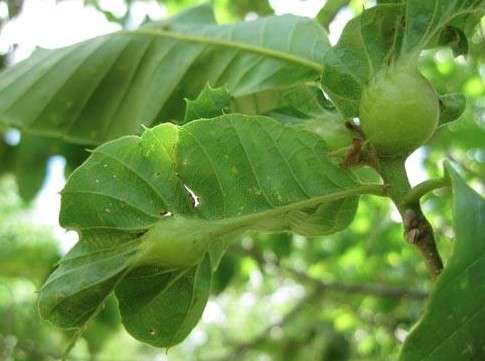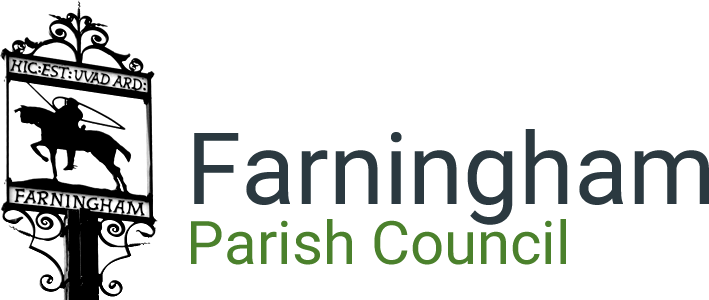Farningham Woods and Oriental Chestnut Gall Wasp
17th June 2021

In 2015 the Oriental Chestnut Gall Wasp (OCGW: Dryocosmus kuriphilus) was discovered in the Woods. This was the first recorded incidence in the United Kingdom. OCGW is an insect pest which stimulates gall production on the leaves and buds of sweet chestnut trees which constitute a very high proportion of the Woods. These galls (shown in the picture above) are abnormal plant growths which damage the trees by reducing leaf area and flowering, and distorting shoot development. In high numbers the galls can weaken sweet chestnut trees and make them more vulnerable to other pests and diseases.
In a desperate attempt to try and prevent the spread of OCGW across the country, The Forestry Commission sadly ordered an immediate and huge acceleration in the coppice management of the Woods during the winter of 2015/2016. This saw the removal of 60 acres of timber about 35% of the Woods 168 acres. However, surveys in the spring of 2016 identified OCGW galls at a number of further sites across London and South-East England which meant that it was no longer practical to contain the pest to specific areas by coppicing.
The Department for Environment, Food and Rural Affairs have funded extensive research to identify ways to help manage oriental chestnut gall wasp to protect the health of sweet chestnut trees in England. Approval has been given for the release of a biological control agent - a parasitoid wasp, Torymus sinensis - to suppress oriental chestnut gall wasp by killing the host, thereby controlling the pest in England. The method is already being used successfully in many countries across Europe.
The parasitoid wasp, Torymus sinensis, is already present in England but in very low numbers. By carrying out further releases of the wasp, it will enable the population to build up to a level whereby it can provide an effective control for oriental chestnut gall wasp in England.
The release of any biological control is carefully regulated, and a thorough risk assessment and evaluation of potential environmental effects of releasing Torymus sinensis in England has been done by scientists. The risk assessment has been reviewed by scientific experts, Defra, as well as the Advisory Committee on Releases to the Environment.
Chief Plant Health Officer Nicola Spence said:
"Threats to sweet chestnut trees have increased as a result of tree pests and diseases such as Oriental Chestnut Gall Wasp and Sweet Chestnut Blight. The release of this biological control agent represents a huge step towards protecting the health of sweet chestnut trees and will further enhance the resilience of our treescape."
Torymus sinensis is about 2.5mm long and is very unlikely to be seen by members of the public. It is completely harmless to humans, animals (except gall wasps) and plants. In Italy, the parasitoid has occasionally been reared from native oak galls, but this occurs at very low levels and was not reported to have an impact to the oak gall populations.
The release is tightly controlled and can only be done under licence. Fera Science Ltd. have been granted a licence to release Torymus sinensis at ten locations in England of which Farningham Woods is one and the wasp has now been released in the Woods. A second release is planned for next year. All of the sites will be carefully monitored over the next ten years.
Senior Scientist at Fera Science Ltd Neil Audsley said:
"Following an extensive programme of research and thorough risk assessment, we are now able to release a biological control agent to reduce the population of Oriental Chestnut Gall Wasp. Biological control is the safest and most effective means to manage pests such as Oriental Chestnut Gall Wasp. This strategy has been successfully used in countries across Europe and will directly contribute to improving the health of sweet chestnut trees in England."
We fervently hope that the release of Torymus in the Woods will prove successful and limit if not eradicate the gall wasp from Farningham and we will keep you updated with developments as we receive further news.
Additional Information:
https://www.farninghamparishcouncil.org/spage-farningham_woods-about_the_wood.html
https://www.gov.uk/government/publications/tree-health-resilience-strategy-2018
